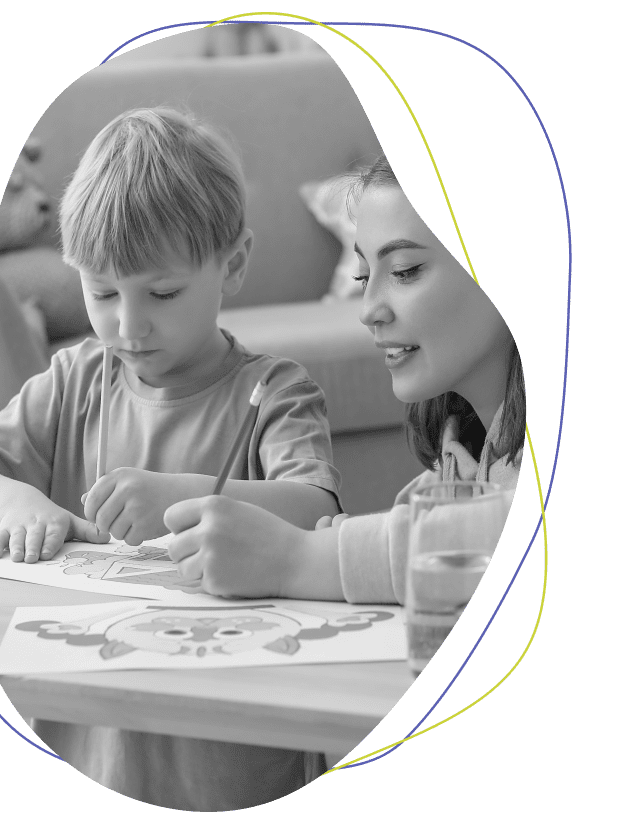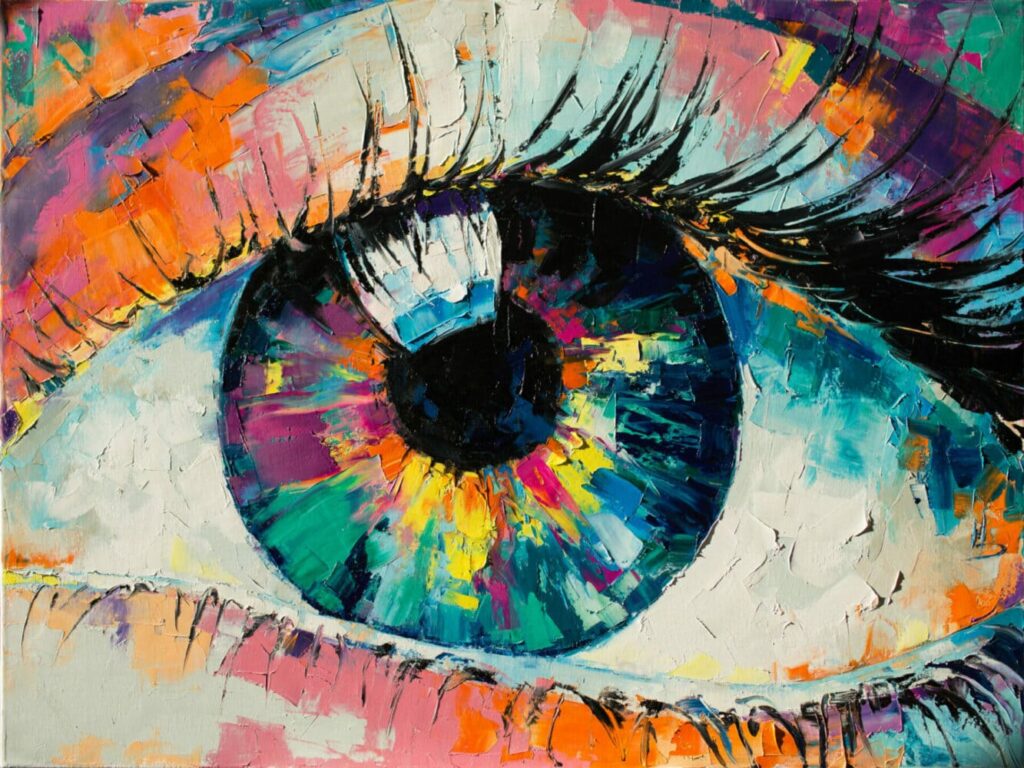



Sometimes words can’t capture a child’s world

When kids are dealing with strong feelings like fear, worry, or sadness, they often don’t have the words to convey how they are feeling. Instead of talking, they might act out how they feel through behaviors like withdrawing from loved ones, having tantrums, or exhibiting signs of restlessness and agitation.

In our child therapy sessions, we adapt the approach to best fit your child’s personality and individual needs. We may incorporate a variety of play and expressive techniques, such as:
Compared to traditional talk therapy, art therapy is often more intuitive for kids. The familiar brushes,
paints, and crayons make it accessible and non-threatening. Remember, every brushstroke is a step
toward healing, understanding, and growth.
Imaginative play, often referred to as pretend play or make-believe, is a cornerstone of child
development that provides a window into their understanding of the world, their desires, fears, and
relationships. By diving into these fantasy realms, children work through real-life challenges, fears, and
joys. It’s a safe space where they can rehearse, relive, or reimagine situations, processing them at their
own pace.
When we use imaginative play in therapy sessions, it can include things like:
Unlike conventional talk therapy, imaginative play resonates deeply with kids—it’s their natural
language. By actively participating or simply observing, therapists can glean valuable insights into a
child’s inner world, making therapeutic interventions subtle yet effective.
Play is the universal language of children. Through games, toys, and playful interactions, children not
only entertain themselves but also communicate, learn, and heal. Play therapy harnesses this natural
inclination, allowing children to express their feelings, confront challenges, and work through difficult
experiences. In the safe, controlled environment of a therapy room, even complex issues like trauma or
grief can be approached with the gentle touch of play.
Play therapy can include aspects of art therapy and imaginative play, but we may also use activities
such as:
This approach is often more effective for children than traditional talk therapy, as it operates within their
natural mode of communication and exploration. It’s not just about having fun; it’s about understanding,
healing, and growing—one playful moment at a time.
Dance Movement Therapy is about letting feelings flow through movement. It’s a chance for kids to
shake off worries and express themselves in a fun, physical way. Through dancing, children can explore
emotions and challenges in a way that feels natural to them. Our therapists guide them through each
step, helping them find their rhythm. Whether in a group or one-on-one, the moving and grooving in
Dance Movement Therapy can be paired with other therapy methods like anxiety management or
distress tolerance. The aim is to help children find a harmonious balance between their bodies and
emotions, all while building self-confidence and resilience in a joyful, energetic setting.
Music has a magical way of reaching into our hearts and souls, and with music therapy, it becomes a
powerful tool for healing and expression. Through the melodies, rhythms, and harmonies, children find a
voice that might be hard to capture with words alone. Instead of talking through challenges, they can
sing, play an instrument, or even just listen to resonate with their emotions. While traditional methods like
Cognitive Behavioral Therapy dive into thought patterns, music therapy dances with emotions, providing
an immersive experience that resonates deeply. By harnessing the universal language of music, we aim
to empower children to harmonize their inner world, building confidence, understanding, and a heartfelt
connection to the world around them.
Ready To Get Started?

FOUNDER & ART THERAPIST
LCAT, LPAT, ATR-BC
WE BELIEVE EVERYONE HAS A UNIQUE STORY AND SOMETIMES, WORDS JUST AREN'T ENOUGH TO TELL IT.

At Creative Arts Therapy Source, art isn’t just an activity; it’s a language that allows you to express your deepest emotions, fears, dreams, and hopes. Your artwork becomes a window that offers a comprehensive view into your pain, experiences, and the hopes you have for the future.
We want therapy to be a joyful, enlightening, and playful exploration where you are free to express yourself in a way that feels right to you. Talk therapy, with the support of art therapy, can help you uncover a new perspective.
We want to help you tell your story





Our first step is to truly understand your child’s challenges, strengths, and needs. We will meet with you and your child to learn their story.




Together, we’ll tailor a plan with the approach that best resonates with your child. This is not a one-size-fits-all approach, but a personalized roadmap towards their well-being.




With regular sessions, we use art therapy and other psychotherapy modalities to continuously improve your child’s well-being, supporting their journey towards lasting change.





Every child is unique, and comes to therapy with different needs. While we can’t guarantee specific results or a set timeline, we do know that with consistency, you may start to see improvements in your child’s behavior over time, such as:
We see children as young as 5 at our practice. When working with children that young, play therapy and imaginative play are the best ways for children to work through big emotions. We utilize games, toys, and puppets in our play therapy sessions with young children. Play is a fun and non-threatening way for a child to work through feelings and communicate traumatic events and experiences.
Parents are invited to stay in the session until their child feels secure enough for them to leave. In our experience, this usually happens by session 2 or 3. At the end of every session, our therapist will share some of the session with the parent while reserving most of the session details for a private phone call or session without the child present. Our therapists love collaborative parents who will implement any tools and approaches we suggest they utilize outside therapy to maximize their child’s success at achieving their goals.
It’s not uncommon for children to initially resist or feel uncertain about therapy. After all, it’s a new experience, and the unfamiliar can be daunting. Our therapists are trained specifically for these challenges. They utilize a variety of fun, engaging techniques, such as games, art, and storytelling, that resonate with children. The therapy room becomes a space of exploration and play, which helps in breaking down initial hesitations. Over time, as trust builds and children realize they’re in a safe, non-judgmental space, their enthusiasm to participate typically grows.
STILL HAVE QUESTIONS?
Our administrative assistant can answer your questions and match you with the best therapist for your needs.
If you have any billing, scheduling or log-in questions or any other inquiry, contact us here.
Celebrating every child’s unique journey.


Offering in-person therapy on Long Island and online therapy across New York and New Jersey.